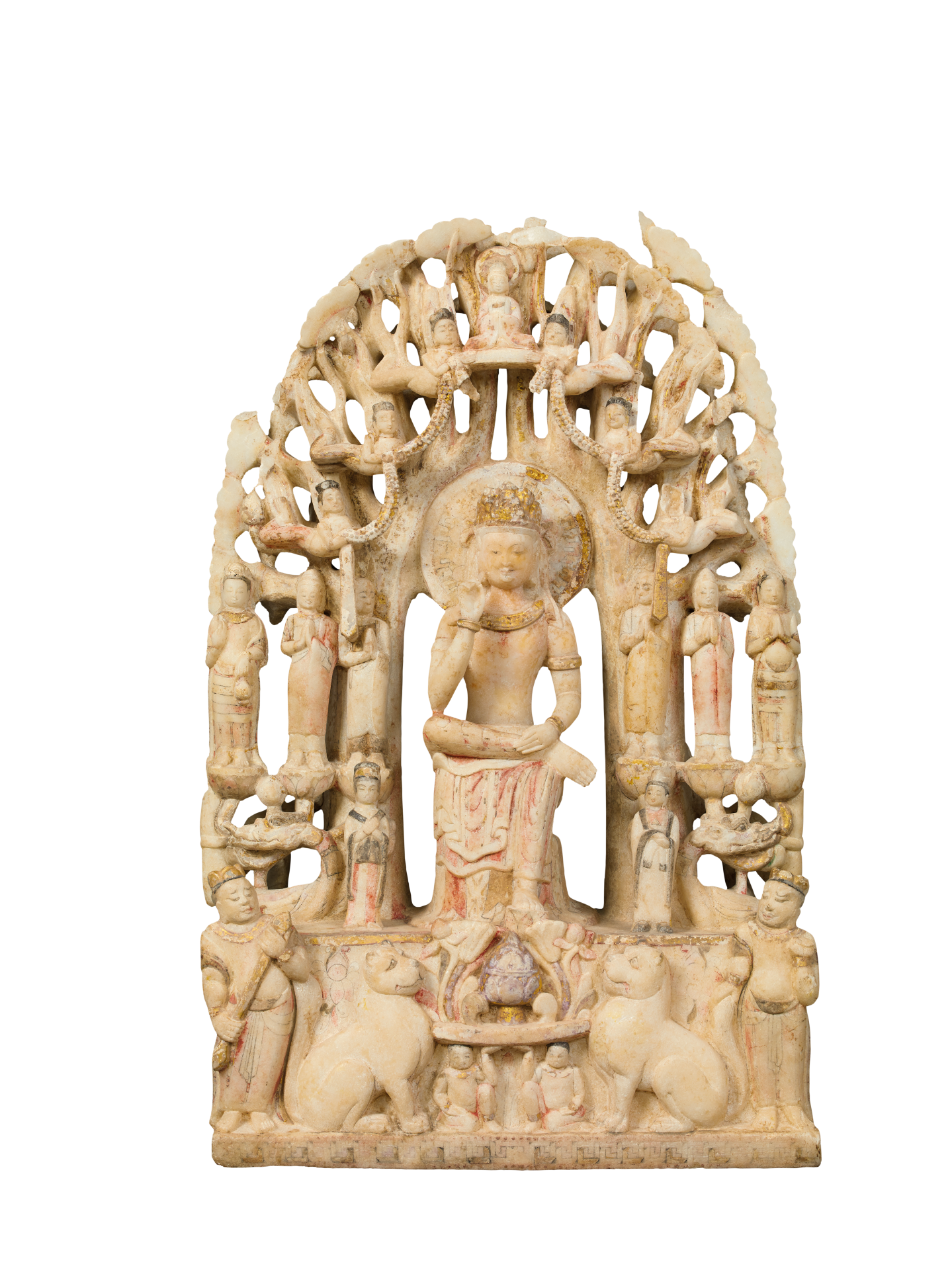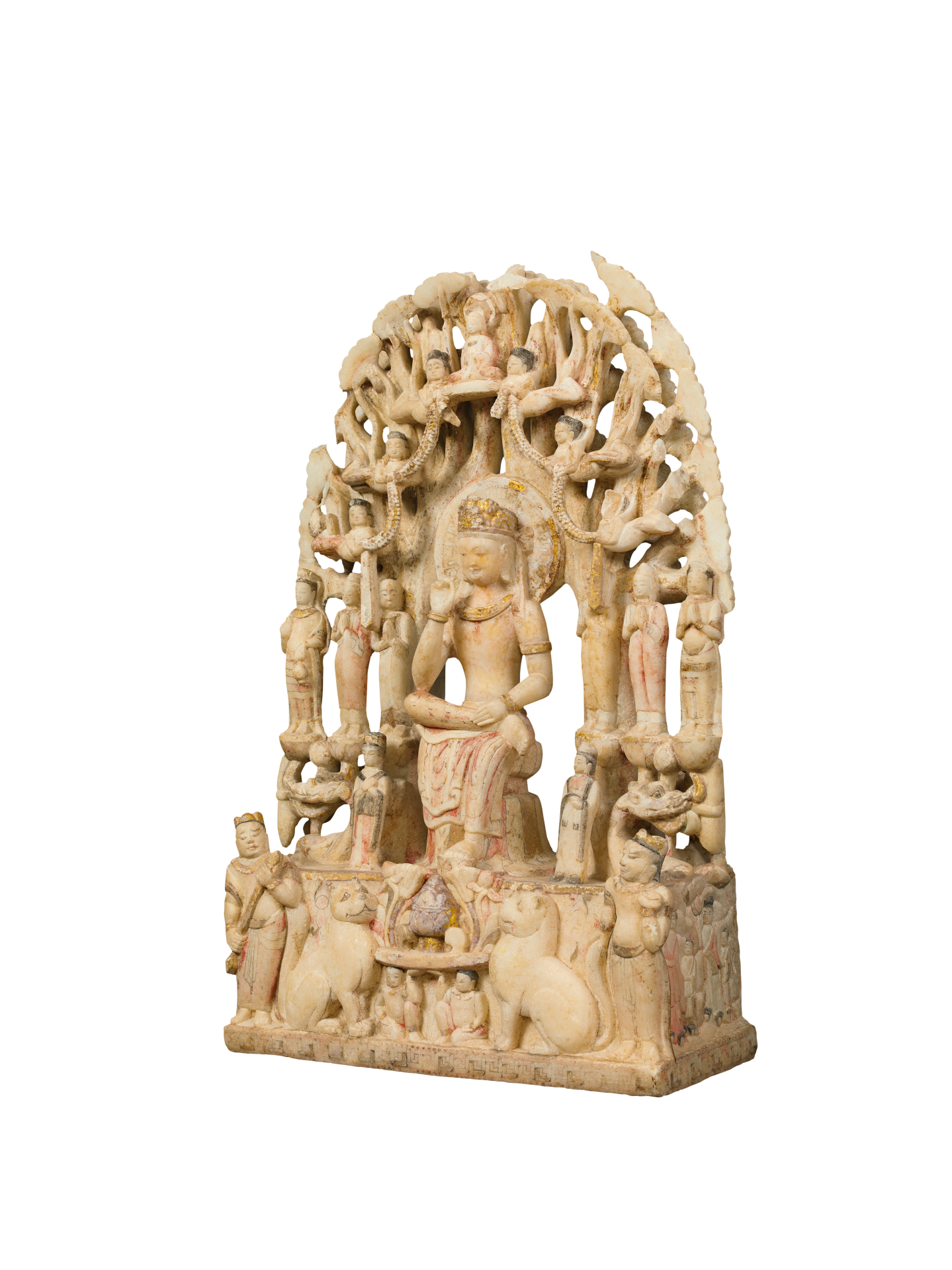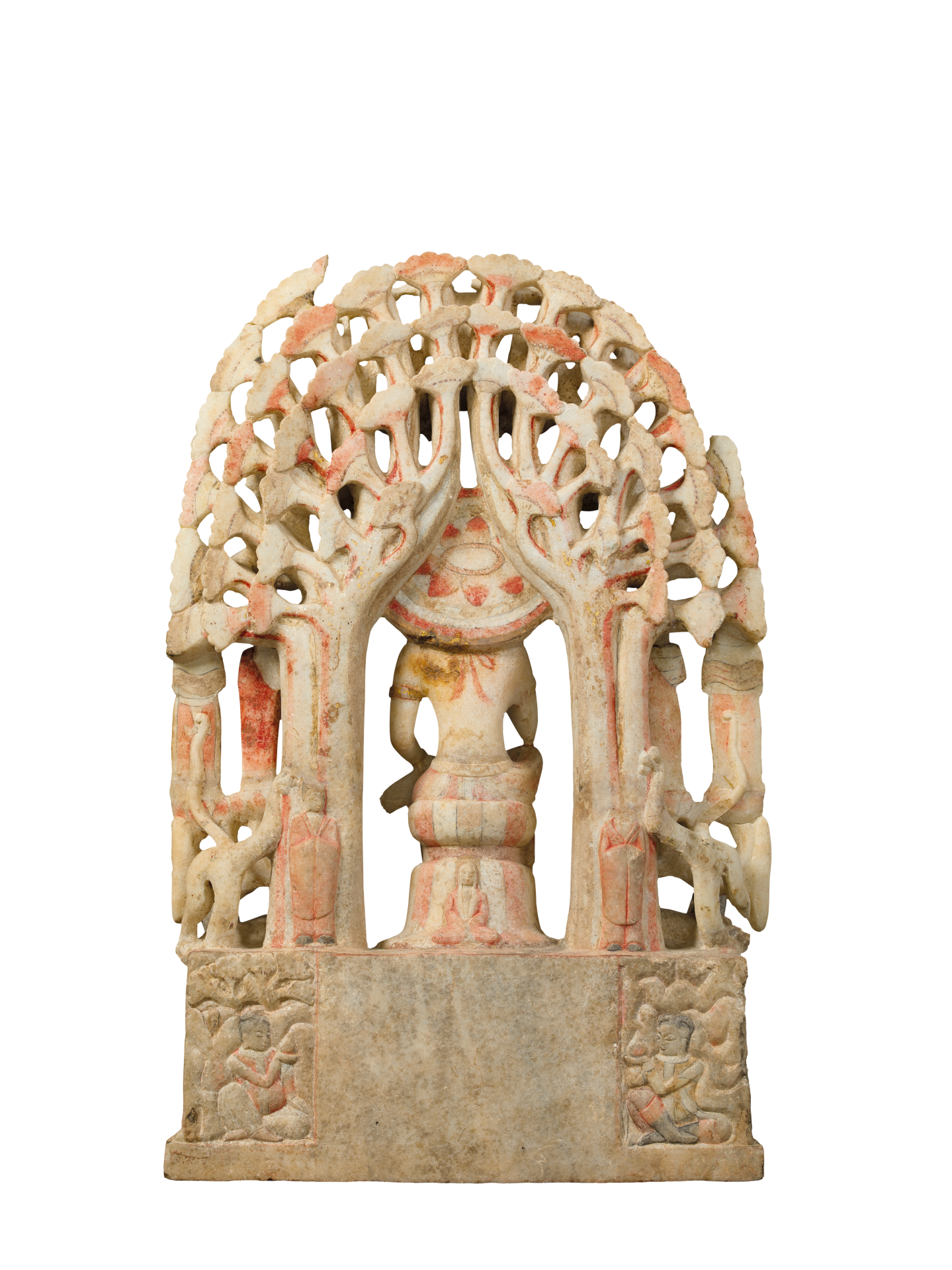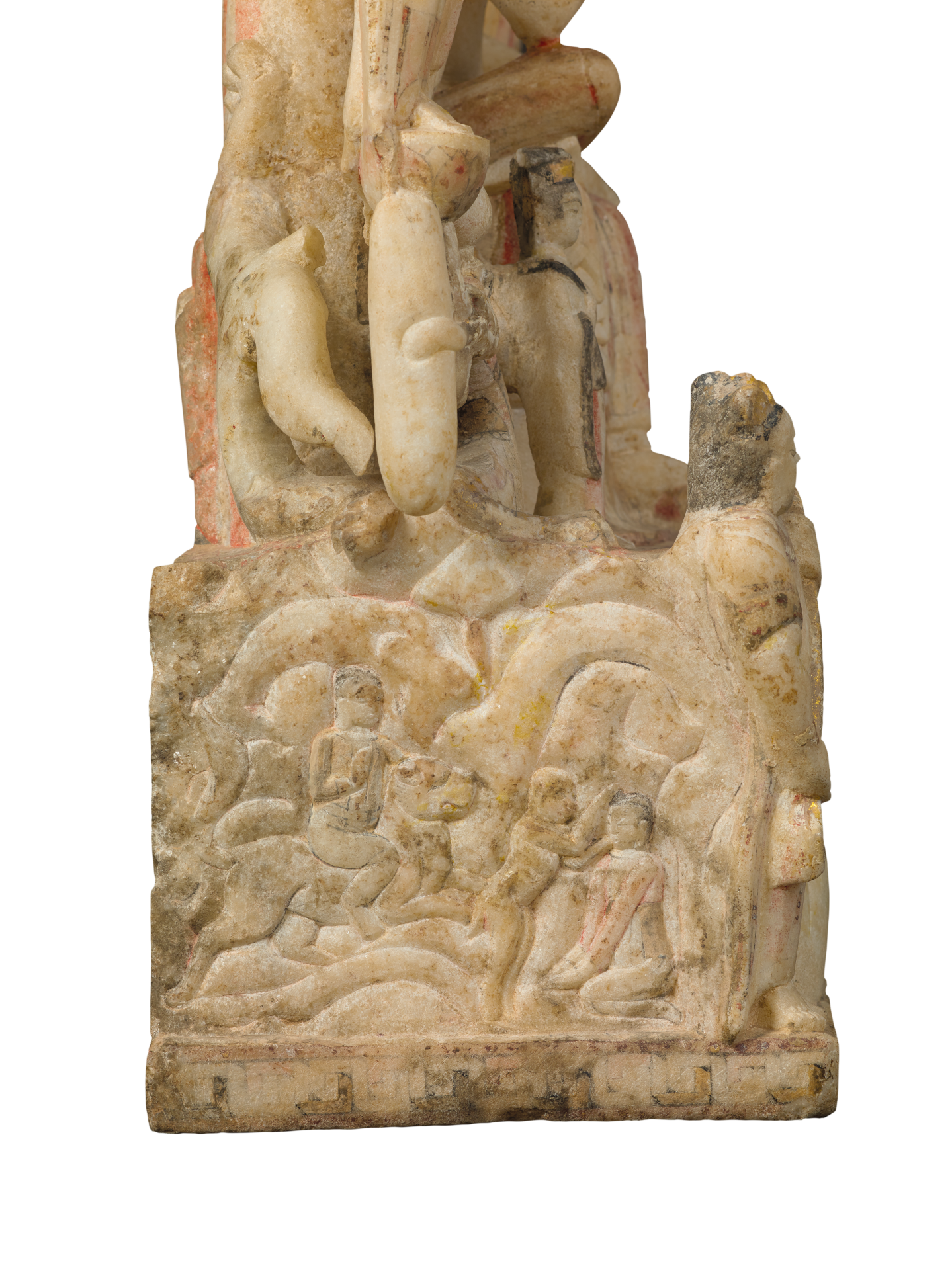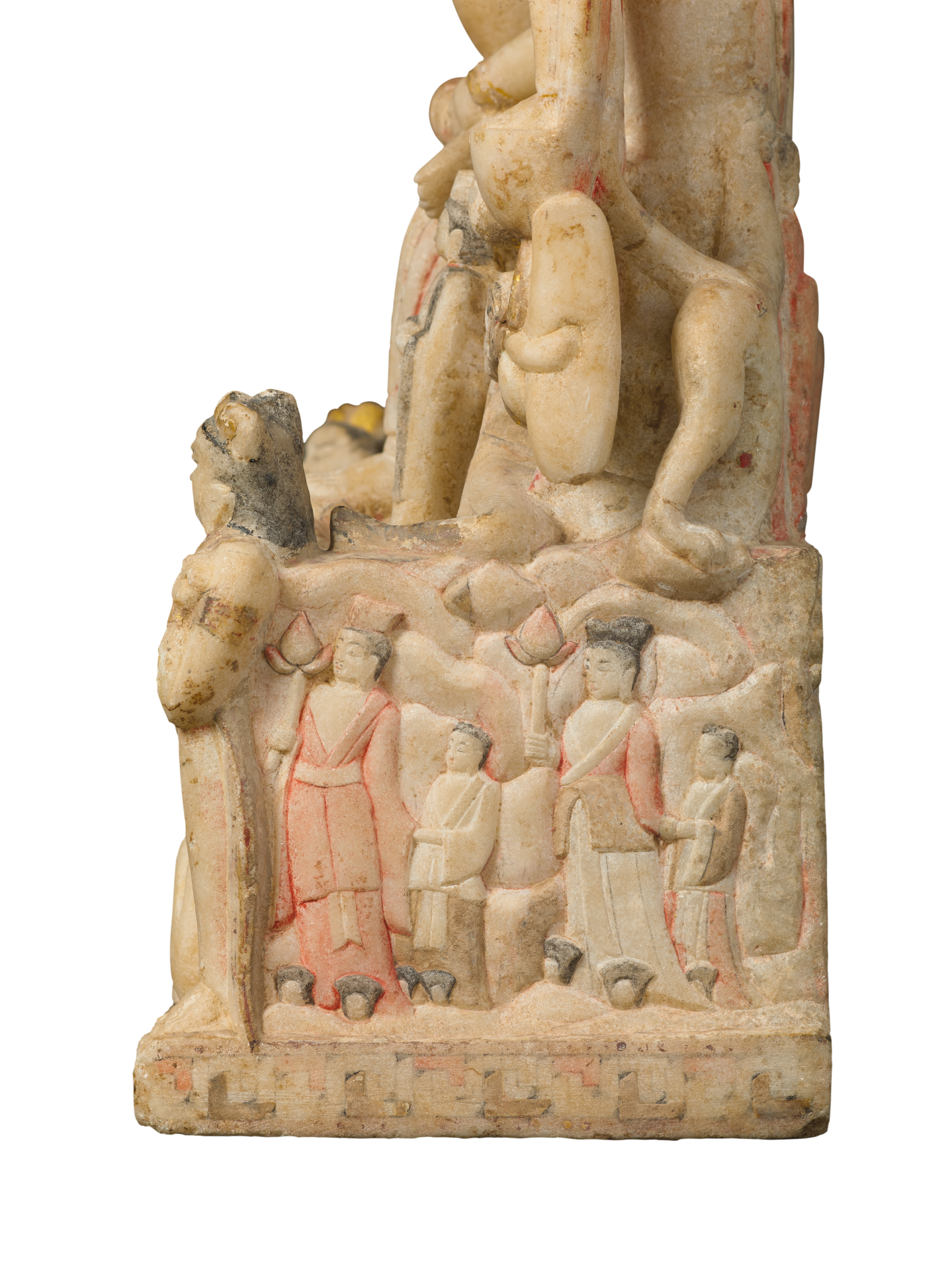Pensive Bodhisattva
The principal deity enshrined in this niche is a Bodhisattva seated under twin trees carved in openwork. This Bodhisattva has an oblong face, a regal crown with ribbons gliding over the shoulders, close-set facial features, eyes highlighted with black lines, and a calm countenance. The necklace, armlets and bangles on the exposed upper body are gold-painted. He is seated in ‘pensive posture’ on a tall cylindrical pedestal with the right leg resting levelly upon the left knee, the left hand placed on the right ankle, and the raised right hand touching the cheek in contemplative mood. The lower body is wrapped in a long red skirt. The left foot is stepping on a lotus platform. The front and reverse sides of the nimbus are carved with lotus motifs.
The principal Bodhisattva is flanked by a bhikṣu, a ‘Solitary Realiser’ (pratyekabuddha) and a Bodhisattva on either side. Two donor images, one male and one female, are sculpted below the lotus platforms of the bhikṣus, while a dragon with head turning around is sculpted below that of the Solitary Realiser and Bodhisattva on each side. In a semicircle above the head of the principal Bodhisattva are six apsaras with body twisted into a U-shape. They are jointly holding a huge jewelled garland, hoovering at the top of the twin trees. The top of the niche right above the Bodhisattva’s head has a sculpted Buddha image seated in ‘lotus posture’. The centre of the rectangular base features two boys supporting a hill-shaped censer, flanked by a pair of lions and Heavenly Kings (Lokapāla), all carved in relief. The wrathful-looking Heavenly Kings are all bearing a vajra and a wish fulfilling jewel. The shorter sides of the base are also decorated with relief carving of narrative Buddhist images. The back of the base is carved with two donors, one on each side, sitting under a tree in ‘relaxation posture’ (lalitāsana) and holding a gem in both hands in worship. The trunks of the twin trees forming the back panel are carved with two standing attendants with cupped hands on the reverse side. The back of the Buddha seat shows a meditative monk in a red robe.
The back panel of this niche is made up of the trunks and interweaving branches of two huge trees, with robust and fierce dragons vigorously coiling around the tree trunks. These are distinctive elements often found on white stone statuary unearthed from around Yecheng, Hebei Province. This openwork niche carved from white stone is noted for its complex composition, rich layering, meticulous carving, extraordinary height exceeding 60 cm, and the vibrant pigments still surviving on the stone surface. It is an extreme rarity among white stone sculptures of the Northern Qi dynasty (550-577 CE).
